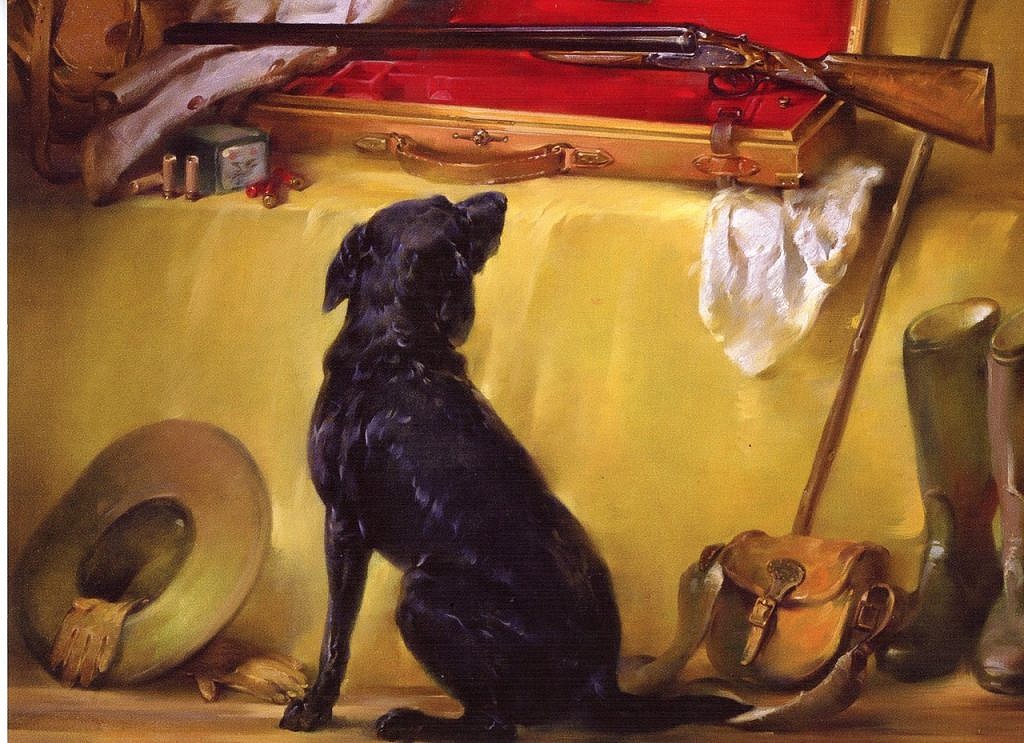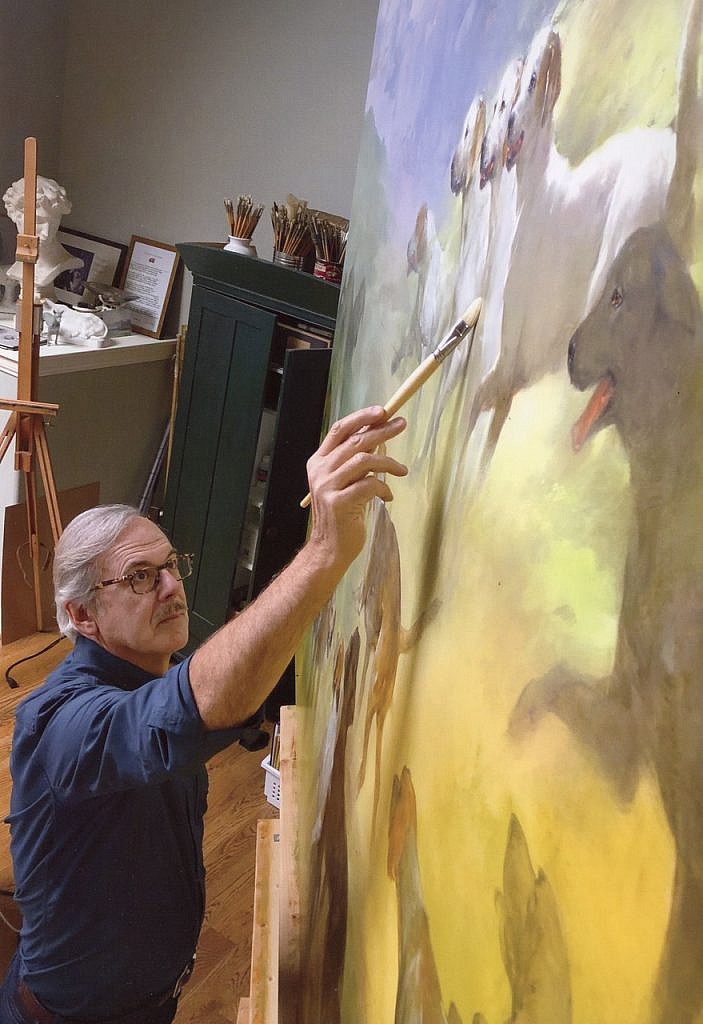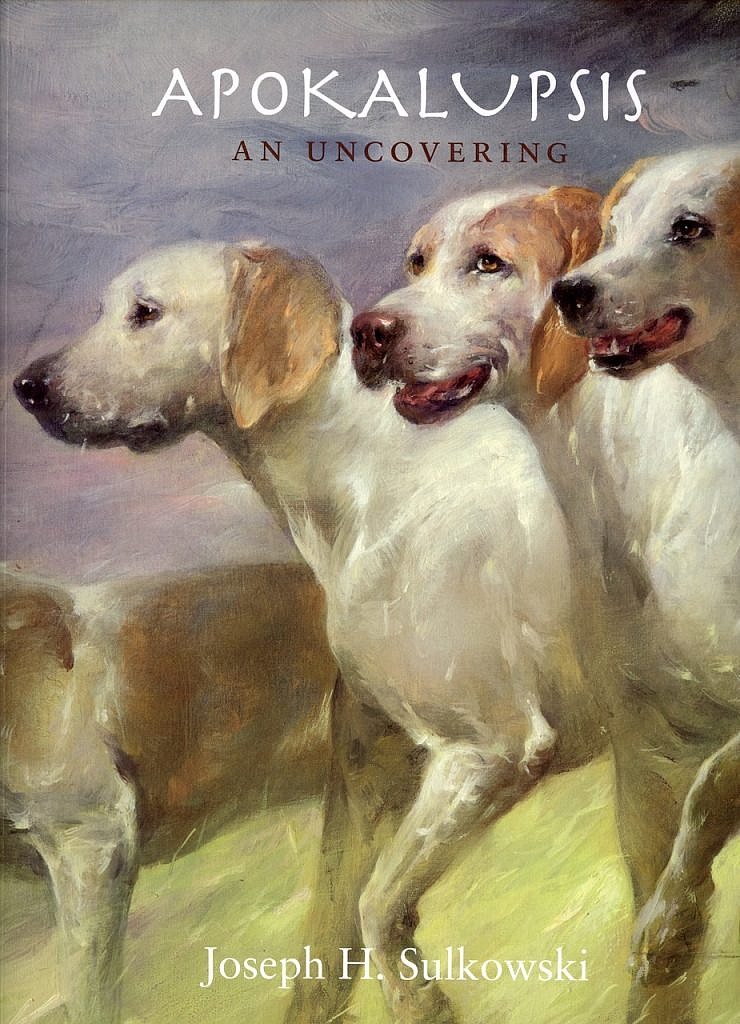
by Brooke Chilvers
Artist Joseph H. Sulkowski considers the works in his interactive, multi-media traveling exhibition, Apokalupsis – An Uncovering, as the magnum opus of his long career as a much appreciated sporting artist. The show, which marries oil paintings and sculpture, light, sound, and video, is on view from March 1 to April 28, 2024 at Augusta, Georgia’s Morris Museum of Art.
In its purest sense, “apokalupsis” means an uncovering or unveiling. Here, the artist’s intention is to reveal truths about human nature. “Art has the capability to help us understand cosmic processes beyond the limits of everyday experience, to transcend everyday perceptions and make us receptive to new ways of viewing reality,” he writes.

Sulkowski calls his singular style, which expresses the nature of his canine subjects as much as nature itself, “Poetic Realism.” The culmination of the exhibit is his monumental, richly symbolic mural, eight feet by 12 feet, nine inches, of foxhounds running through the countryside. “I have put everything I have come to know and experience about life and living on a grand canvas in allegorical form,” says Joseph, who finds poetry and meaning in the simple acts of working dogs, from foxhounds in the field to a pile of Basset hounds resting in the kennel.
In Apokalupsis, Sulkowski translates the human condition and the meaning of life into eloquent canine images, which embody “the ideas and concepts that influence our relationships and awareness of one another, the planet we inhabit, and the larger universe,” quotes the Morris Museum website. In Joseph’s paintings and studies, the foxhounds’ body language and interactions are “personifications” of the familiar Seven Deadly Sins (greed, gluttony, sloth, etc.), the Five Senses (sight, smell, etc.), the Four Elements (earth, water, fire, air), and the Three Graces (love, beauty, joy). In the exhibit’s accompanying eponymous book, a guide to all the symbolic aspects of the work is thoughtfully contemplated, illustrated, and explained by the artist.

For this exhibition, Joseph returned to sculpture for the first time in the fifty years since art school, working on the Three Graces sculpture in collaboration with animalier artist Diana Reuter-Twining. The challenge was to turn his keyboard of colors into a large-scale, three-dimensional piece of art. Here, the three hounds are metaphors for Love, Beauty, and Joy as they move through time and space towards transcendence.
Joseph’s manner is the very opposite of popular photorealism, favoring the emotional effects of light and brushstroke over the showmanship of painting every leaf and feather. He aims for his subjects’ spirit and soul and what they can impart to us. “My ‘poetic realism’ is more real than photorealism,” he declares.

A child of the cultural institutions of Pittsburgh, Pennsylvania, Joseph was early brought face-to-face with Renaissance and Impressionist masterworks, with Da Vinci and Rubens. He attended the Pennsylvania Academy of Fine Arts in Philadelphia, the oldest art school in America. In 1974, he moved to the Art Students League of New York, where he found Frank Herbert Mason (1921–2009) and studied not only the classical principles of drawing, human anatomy and figure painting, but also the actual techniques and materials developed and used by Rembrandt, van Dyck and Rubens. From Mason, Sulkowski learned how to grind his own pigments from powdered plants and minerals, and to mix them, following the old recipes, with the finest hand-prepared linseed oils, amber varnishes, and Venice turpentine.

Sulkowski brings to his canvases all his experience in the different moods, light, and action of upland hunting with dogs, whether pursuing quail in the long-leaf pine forests of South Georgia, or grouse in the purple upland heather moors of the Scottish Highlands.
In addition to hanging in hunting clubs, board rooms, and prestigious private collections, Joseph’s work has appeared in many magazines, including Gray’s Sporting Journal (also a supporter of this Augusta exhibition), Sporting Classics, Western Art Collector, and Country Life, among others.

Joseph’s previous book (which I also edited) The Sporting Life, The Art of Joseph H. Sulkowski (2017) features still-lifes, dog paintings, scenes of hunters and anglers, and odes to sporting gear reminiscent of an entire way of life. It’s a lovely publication.
From Joseph Sulkowski’s lifelong spiritual quest, much of it in the company of hunting dogs, as well as within the confines of his studio, his fundamental truth is that “All of life is connected. All is One.”
Brooke Chilvers is excited to attend the Morris Museum Gala for the opening of Apokalupsis, An Uncovering, and to cross paths once again with both artist Joseph Sulkowski and Gray’s editor Mike Floyd. Almost as good, she says, is that “this will be the first time I see my husband of thirty years, retired professional hunter Rudy Lubin, in a tuxedo.”
